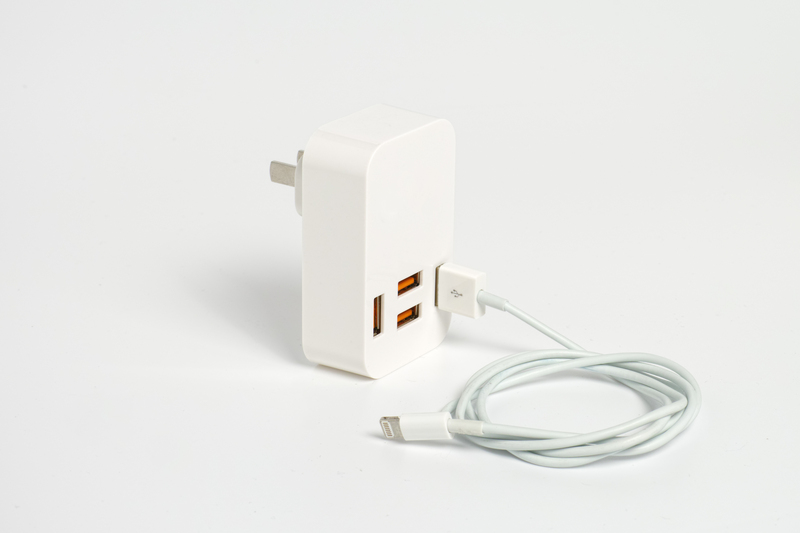Cut the Clutter: Essential Ways to Downsize Before Moving
Moving can be one of life's most stressful experiences--but it also offers a golden opportunity: the chance to declutter and start anew. If you're preparing for a move, downsizing your belongings can save you time, energy, and even money. In this comprehensive guide, we'll explore essential ways to cut the clutter and make your transition into a new home smoother and more enjoyable.
Why Downsizing Before Moving is Crucial
Many people underestimate just how much stuff they've accumulated over the years. Downsizing before moving isn't just about paring down; it's about creating an organized, peaceful living space in your new home. When you reduce your load, you reduce your moving costs, make unpacking easier, and pave the way for a clutter-free start.
Benefits of Decluttering Before a Move
- Lower moving costs: Fewer items mean fewer boxes, which often translates to lower transport expenses.
- Stress-free organization: With less to pack, unpacking becomes far less overwhelming.
- Simplified lifestyle: Keeping only what you need and love makes your new space more functional and enjoyable.
- Emotional clarity: Letting go can be a cathartic process, helping you focus on a fresh start.

Smart Strategies to Declutter and Downsize Before Moving
1. Start Early and Make a Plan
Procrastination is the enemy of successful moving. Begin your decluttering journey as soon as you know you'll be relocating. Craft a detailed plan for each room in your home. Assign a timeline and set clear, achievable objectives. For example:
- Week 1: Sort and downsize the kitchen.
- Week 2: Tackle the living room and bedrooms.
- Week 3: Sort through the garage, attic, or basement.
2. Sort Items Into Categories
One of the proven methods for efficient decluttering before moving is to categorize your belongings into four groups:
- Keep: Essential items you use regularly or have strong sentimental value.
- Donate: Usable items that you no longer need but could benefit others.
- Sell: Valuable items you don't want that could earn you some extra cash.
- Discard: Broken, expired, or worn-out items that serve no purpose.
3. Apply the One-Year Rule
A popular decluttering guideline is the One-Year Rule: if you haven't used an item in the last year and have no plans to use it in the coming year, it's time to let it go. This rule works for clothing, gadgets, kitchenware, and more. Be honest with yourself about things you've simply been storing out of habit!
4. Evaluate Furniture and Large Items
Moving is the perfect time to downsize bulky furniture and appliances. Consider the layout and size of your new home. Will your current sofa fit? Do you need that extra bookshelf?
- Measure large items before deciding to take them.
- Use floor plans of your new home to visualize what will fit comfortably.
- If something won't make sense in your new space, sell, donate, or recycle it before moving day.
5. Digitize Where You Can
Piles of old papers, documents, photos, and DVDs can take up unnecessary space. Digitize important documents and sentimental items to keep your memories and records safe--and make your moving boxes lighter. Backup digital files to the cloud or an external hard drive for added security.
6. Involve Your Family
If you're moving with family or roommates, involve everyone in the downsizing process before moving. This is especially important for children, who may struggle with letting go of toys or clothes. Set aside a weekend to declutter together, making it a fun and collaborative effort. Share your reasons for decluttering and keep communication positive and supportive.
7. Limit Sentimental Clutter
It's natural to feel attached to certain items. However, keeping too much sentimental clutter can prevent you from enjoying your new, uncluttered home.
- Select a few meaningful keepsakes--a treasured photo album, a few pieces of heirloom jewelry, or artwork.
- Try photographing sentimental objects before letting them go, so you can preserve the memory without the physical clutter.
8. Sell, Donate, or Recycle Responsibly
After you've sorted everything, it's time to find new homes for your unwanted items:
- Sell gently used clothes, electronics, or furniture online or via a garage sale. Websites like Craigslist, Facebook Marketplace, and eBay are popular choices.
- Donate to local charities, shelters, or thrift stores.
- Recycle electronics, appliances, or hazardous materials at approved locations.
9. Be Ruthless with the Kitchen
Kitchens often hide unused utensils, chipped dishes, old spices, and small appliances. Moving is a perfect time to declutter these spaces.
- Keep only the cookware and gadgets you use regularly.
- Discard expired food and spices.
- Donate duplicates or unnecessary kitchenware to local charities.
10. Prepare an Essentials Box
As you declutter for your move, put together a box of immediate necessities--everything you'll need for the first 24-48 hours after arriving in your new home. Typical items include:
- Toiletries
- A few changes of clothes
- Chargers and electronics
- Basic cooking utensils
- Important documents
Tips and Tricks to Make Downsizing Easier
Enlist Professional Help
If you're struggling to downsize before moving or have a large property to clear out, consider hiring a professional organizer. They can help you make objective decisions, provide resources for donations and sales, and speed up the process.
Adopt a Minimalist Mindset
Moving is a great time to embrace minimalism. Ask yourself if each item adds value to your life or just takes up space. Keep only what you truly need, use, or love. This mindset not only makes moving easier but can improve your overall wellbeing and happiness in your new home.
Schedule Regular Decluttering Sessions
Even if your move is months away, regular decluttering sessions--weekly or monthly--will keep you on track. Gradually downsizing before your move is less overwhelming and allows you to make well-considered decisions.
Celebrate Your Progress
Downsizing can be emotionally and physically taxing. Take time to celebrate milestones--such as clearing out a room or finding new homes for old treasures. Reward yourself with a special treat or a break, and appreciate all the hard work you've done.
The Environmental Impact of Downsizing and Decluttering
Cutting clutter before moving doesn't just benefit you--it helps the environment, too. By donating, recycling, and selling unwanted items, you reduce landfill waste and support a more sustainable, circular economy. Many charities repurpose or recycle electronics, textiles, and household goods, giving your discarded items a new lease on life.
Eco-Friendly Downsizing Options
- Freecycle networks: Local groups offer unwanted items to neighbors for free, keeping products in use and out of landfills.
- Recycling centers: Properly recycle electronics, batteries, paints, and cleaning supplies.
- Textile recycling: Many organizations accept worn clothing and linens for repurposing or recycling.
Downsizing Stories: Real-Life Successes
Many who have embraced the art of downsizing before moving speak of the freedom and relief it brings. Here's what a few have shared:
- "We cut our moving boxes in half by donating old books and clothes. The new house felt bigger, brighter, and more welcoming." - Sarah D.
- "Going paperless before our move reduced clutter tremendously. I finally scanned and recycled boxes of old tax returns and receipts!" - Mike G.
- "Selling our big sofa that wouldn't fit in the new apartment paid for our moving truck and two dinners out to celebrate!" - Linda B.

Frequently Asked Questions About Downsizing Before Moving
How far in advance should I start downsizing before moving?
Ideally, start as soon as possible. At least 2-3 months in advance of your move gives you ample time to sort, sell, donate, and dispose of items thoughtfully. The earlier you begin, the less rushed and overwhelmed you'll feel.
What's the most efficient way to decide what to keep?
Focus on two core ideas: utility and joy. Keep items that you use regularly or that truly make you happy. Apply the One-Year Rule and be honest about items that are just taking up space "just in case."
What should I do with sentimental items I don't want to keep?
Photograph them to preserve the memory, and consider gifting meaningful items to loved ones. If you must let items go, remember it's the memory that matters, not the object.
Conclusion: Embrace a Fresh Start with a Lighter Load
Moving doesn't have to be a source of stress and chaos. By taking advantage of the opportunity to cut the clutter and downsize before your move, you lay the foundation for a more organized, peaceful, and joyful life in your new home.
Whether you're downsizing for a move to a smaller home, relocating for work, or simply seeking a simpler lifestyle, use these essential tips to guide your process. Remember: every item you release is a step closer to a fresh start.
Ready to cut the clutter and begin your new chapter? Start small, stay committed, and enjoy the freedom of a downsized move!



